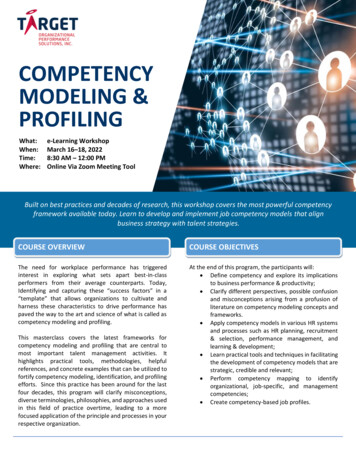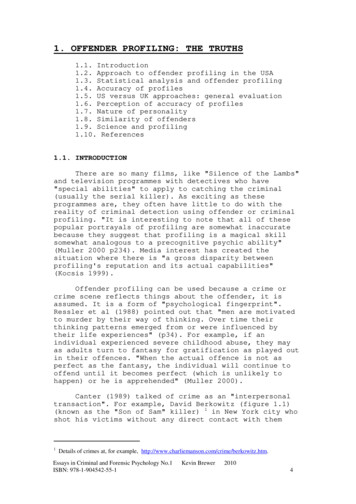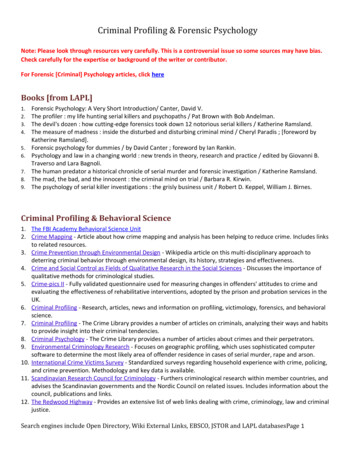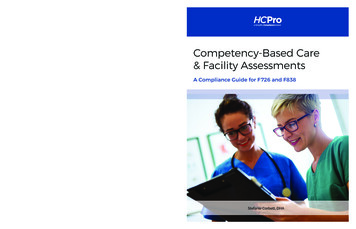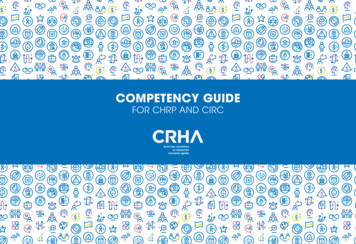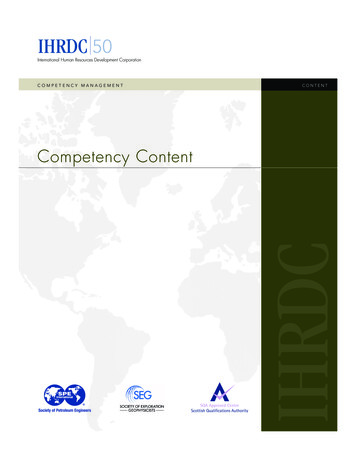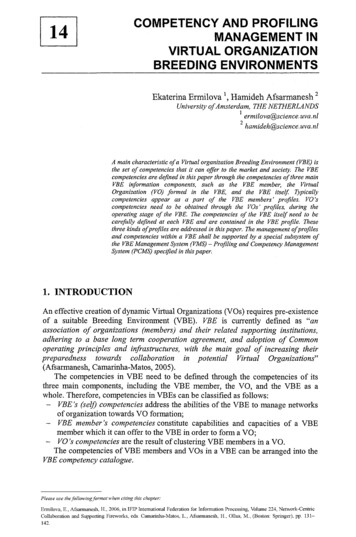
Transcription
ion and othergeneral VO-related information. Competencies of a VO can be of two types,including, first the VO partners' competencies, and second the new emergingcompetencies, which are the result of VO partners' collaboration.The VBE's (self) profile, in addition to the common profile elements, includes:a List of members. List of actors. List of roles, List of rules and other general VBErelated information. The examples of VBE's processes include networkmanagement, VO formation, VO creation, marketing/branding of products/services(to be sold through the VBE), innovation promotion, etc. The examples of VBE'scompetencies include its ability related to VBE management, VO formation andcreation, iimovation promotion, etc.Two important catalogues are necessary to be presented and managed inside theVBE, one catalogue for VBE members' profiles, another for VO's profilescatalogue. The VBE members' profiles catalogue can be accessed as a collectionof members' profiles sorted by different types of organization information. In this
Competency and profiling management in VO breeding environments139catalogue all the competencies, resources, product/services, etc., available in a VBEthrough its members, as well as the new emerged competencies appearing as theresult of a possible assembly of VBE members' competencies, can be presented.VO's profiles catalogue can be accessed as a collection of VOs' profiles sorted bydifferent types of VOs' information. These two catalogues are combined in a singleVBE profiles catalogue system.3.3 Main functionalities of PCMSThe summary of the PCMS functionalities can be found in Table 1. Please noticethat inside the table some details are provided about these functionalities and howthey will be achieved, e.g. manually, semi-automatically, etc.The proposed set of PCMS functionalities is divided into five groups, includingcreation, updating, structuring, search & retrieval, and analysis. Each group isaddressed by the three PCMS's profile components for VBE member, VO and VBE(itself), as well as by the catalogue of the VBE members 'profiles and VOs ingVO'sprofileManual / Semi-aulomatic:- Obtaining the profile data- Creation of the profile- Updating the ontologyManual / Semi-automatic:- Obtaining the profile data- Updating the profile- Updating the ontologyAutomaticontology-basedstructuring of the profile (e.g.structuring competencies in theprofile according to thecompetency classification)Searcli &RetrievalAnalysisVBE'sprofile- Evaluation of amember by differentcriteria-Suggestion of newcompetencydirections\TJE member.s and VOs' profiles catalogueAutomatic ontology-based sorting of thecatalogue:- by individual (e.g. city) or combined (e.g.city competency) elements of the profile- by ratings (e.g. financial rating)- Specification of values for any set of theprofile elements- Value of each element field can be givenin different ways and using different types ofrestrictions, including restrictions on objectrelations or object attributes- Representation of the search results as aprofiles catalogue, as well as graphicalvisualization- Several levels of approximation to thesearch results (i.e. search can have severaliterations)- Ontology based Gaps identification- Supporting retreat or adding new VBEmembers for gap elimination- Ontology based "building" of newcompetencies in VBE, out of the existingonesTable 1 -Main functionalities of PCMS
NETWORK-CENTRIC COLLABORATION1403.4 Ontology for profiles and competenciesThe ontology for profiles and competencies is a support component for the PCMSthat aims at the following: (1) providing the common understanding of the conceptsrelated to profiles and competencies in VBEs, (2) classification of knowledge (e.g.competencies) and support of interoperability of knowledge inside the VBE andamong the VBEs, and (3) supporting the PCMS functionalities (see Table 1).The current PCMS ontology is constructed top-down and m
literature study on competency models, second the study of existing systems for organization profiling, third the study of profiling and competency management in existing VBEs, and fourth the experts' requirements to the PCMS. Chapter 3 addresses the specification of the PCMS's components and functions.
